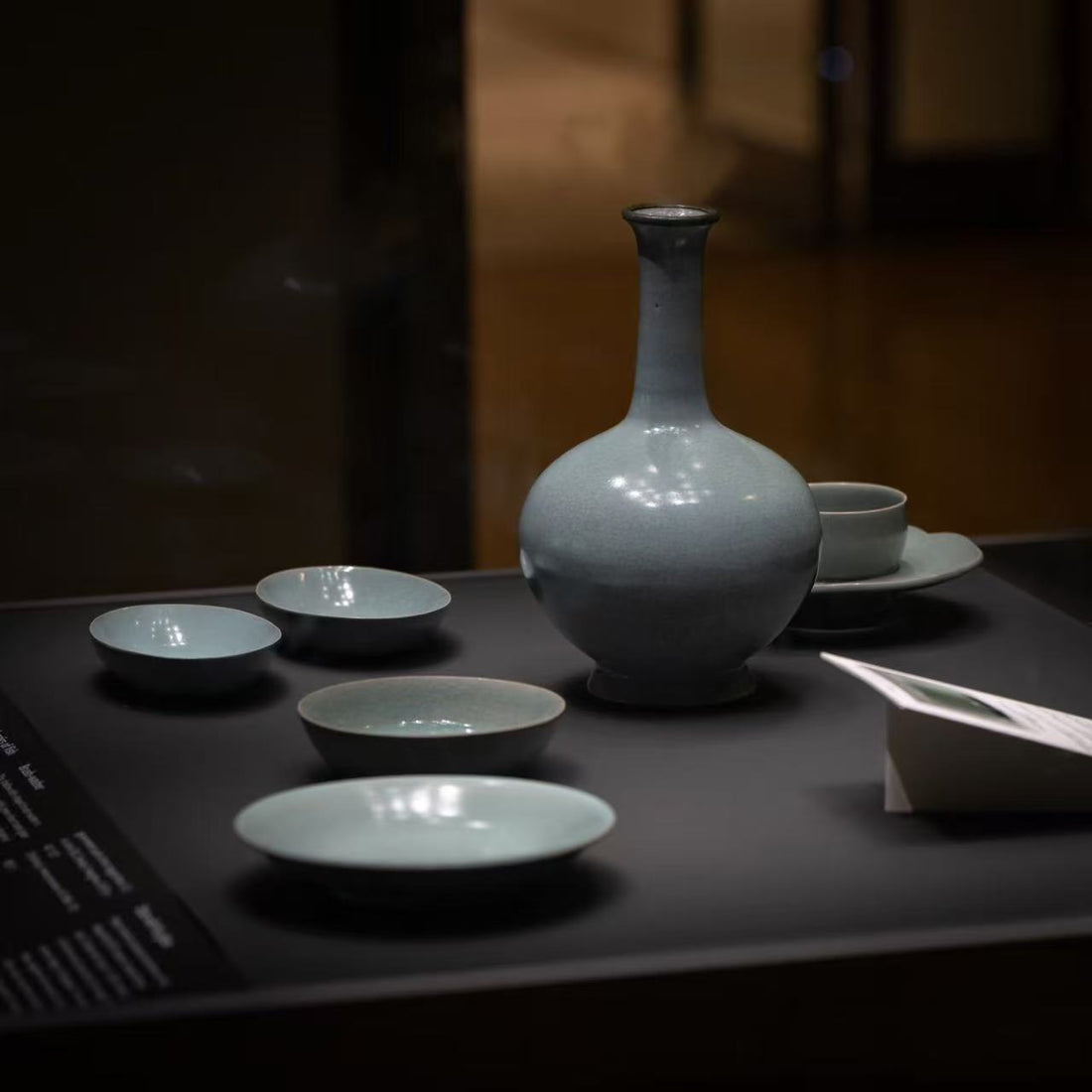
Complete Record of Surviving Ru Ware: A Millennia-Long Ceramic Legend

Ru ware, one of the Five Great Kilns of the Song Dynasty, is world-famous for its sky-blue glaze and the legendary use of agate in the glaze. However, authentic Ru ware artifacts are exceedingly rare today, and each surviving piece is considered a national treasure.
Surviving Quantity of Ru Ware
There are fewer than 100 intact Ru ware items in existence. According to joint research by the Palace Museum in Beijing and the National Palace Museum in Taipei, there are approximately 90 confirmed complete Ru ware pieces worldwide, broken down as follows:
-
Taipei Palace Museum: 21 pieces
-
Beijing Palace Museum: 17 pieces
-
British Museum: 7 pieces
-
Shanghai Museum: 5 pieces
-
Osaka Museum of Oriental Ceramics, Japan: 3 pieces
-
Other institutions (Europe, America, Hong Kong): around 15 pieces
-
Private collections: 10–15 pieces (some not publicly known)
Note: This count excludes fragmentary archaeological finds and only includes intact vessels.

Notable Collections and Auction Records:
-
Taipei Palace Museum (21 pieces)
Representative pieces include the sky-blue glazed nscent bowl without crackles—recognized as the sole "king of Ru ware"—and a sky-blue glazed lotus-shaped warm-cup bowl, one of only two such items in the world (the other is in Japan). Mostly from Qing imperial collection, these pieces are noted for their pristine glazes and exceptional preservation. -
British Museum (7 pieces)
Key examples include a sky-blue glazed cup-washer formerly owned by Sir Percival David (originally belonging to Emperor Qianlong), and a sky-blue glazed tripod washer with "crab claw" crackle glaze—these entered European collections in the early 20th century via dealers such as Lu Qinzai. -
Beijing Palace Museum (17 pieces)
Representative artifacts include a rare sky-blue glazed, string-patterned tripod jar—the only intact one globally—and a sky-blue glazed plate with the character “丙” inscribed on the base, believed to have been a court inventory mark. -
Private Collections & Auction Highlights
-
Known Private Owners
-
Hong Kong collector: 2 pieces (one sky-blue glazed washer sold in 2017 for HKD 294 million)
-
Japanese collector: 3 pieces (formerly owned by Aoki Eiichi, now in Osaka Museum)
-
Western collectors: ~5 pieces (some not publicly exhibited)
-
-
Notable Auction Sales
-
2017, Sotheby’s Hong Kong: Northern Song Ru ware sky-blue washer sold for HKD 294.3 million (~USD 37.7 million)
-
2008, Sotheby’s New York: Ru ware sky-blue narcissus basin sold for HKD 185 million
-
2022, Poly Beijing private sale: Ru ware sky-blue cup-washer sold for RMB 186 millio
-
-

Ru ware occupies a pinnacle place in China’s ceramic heritage. Its scarcity and the fact that many masterpieces now reside overseas stem from the political turmoil of the late Qing and Republican eras, a Western craze for collecting, and activities by antique dealers. In the 1920s, Emperor Puyi gifted many such artifacts to close associates to support the court, which later entered the market. Some pieces were purchased by Sir Percival David and ultimately donated to the British Museum. While major institutions now hold most Ru ware, scholarly research and collaborative exhibitions—like those between the Palace Museum and the British Museum—continue to promote cultural sharing.

"Although Ru ware is scattered across the world, civilization knows no borders."

